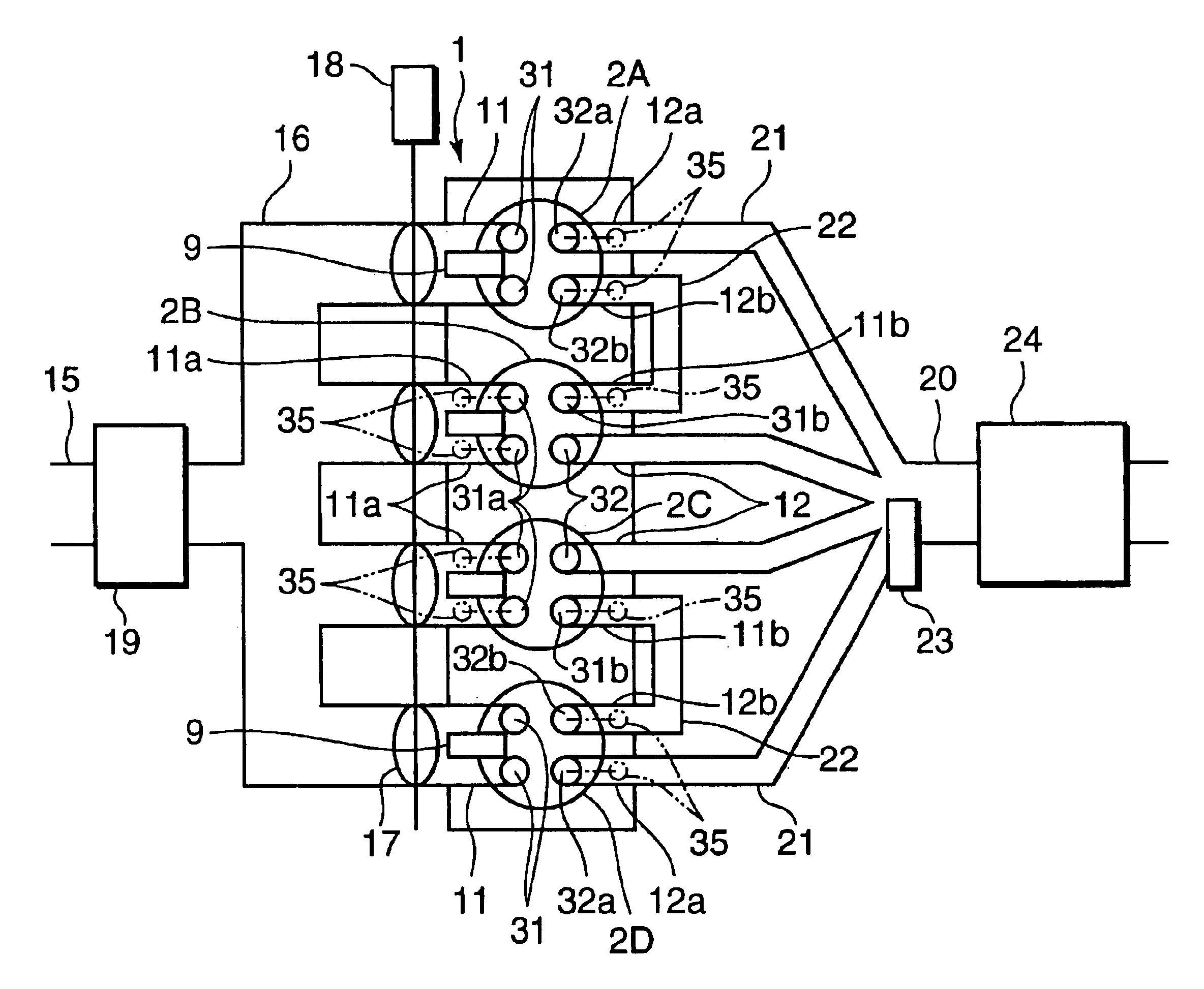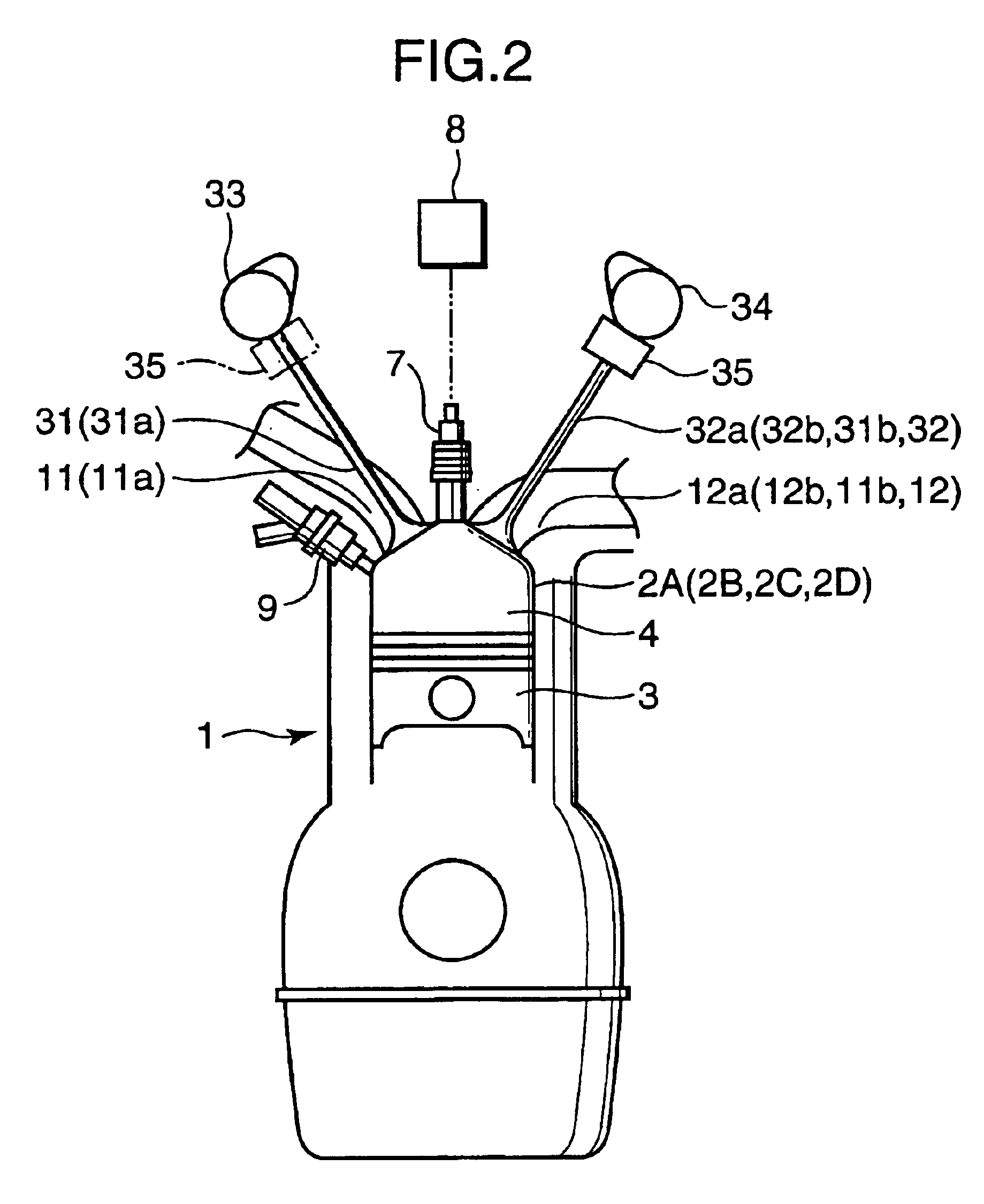Control device for spark-ignition engine
a control device and spark ignition technology, applied in the direction of electric control, machines/engines, combustion air/fuel air treatment, etc., can solve the problems of product cost, disadvantageous provision of lean nox catalyst, lean nox catalyst is susceptible to sulfurization poisoning, etc., to prevent deterioration of emission-cleaning performance
- Summary
- Abstract
- Description
- Claims
- Application Information
AI Technical Summary
Benefits of technology
Problems solved by technology
Method used
Image
Examples
Embodiment Construction
[0029]FIG. 1 is a diagram schematically showing the construction of a spark-ignition gasoline engine provided with a control device according to a preferred embodiment of the invention, and FIG. 2 is a diagram schematically showing the construction of one of cylinders of an engine body 1 together with such associated components as intake and exhaust valves provided in the cylinder.
[0030]Referring to these Figures, the engine body 1 has a plurality of cylinders. Specifically, the engine body 1 has four cylinders designated 2A, 2B, 2C and 2D in the illustrated embodiment. A piston 3 is fitted in each of these cylinders 2A-2D and a combustion chamber 4 is formed above the piston 3. There is installed a spark plug 7 at the top of the combustion chamber 4 in each cylinder 2 in such a way that a far end of the spark plug 7 is located inside the combustion chamber 4. The spark plug 7 is connected to an ignition circuit 8 which electronically controls ignition timing.
[0031]On one side of th...
PUM
 Login to View More
Login to View More Abstract
Description
Claims
Application Information
 Login to View More
Login to View More - R&D
- Intellectual Property
- Life Sciences
- Materials
- Tech Scout
- Unparalleled Data Quality
- Higher Quality Content
- 60% Fewer Hallucinations
Browse by: Latest US Patents, China's latest patents, Technical Efficacy Thesaurus, Application Domain, Technology Topic, Popular Technical Reports.
© 2025 PatSnap. All rights reserved.Legal|Privacy policy|Modern Slavery Act Transparency Statement|Sitemap|About US| Contact US: help@patsnap.com



